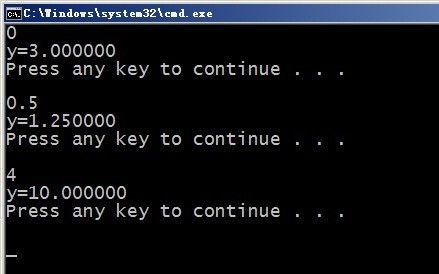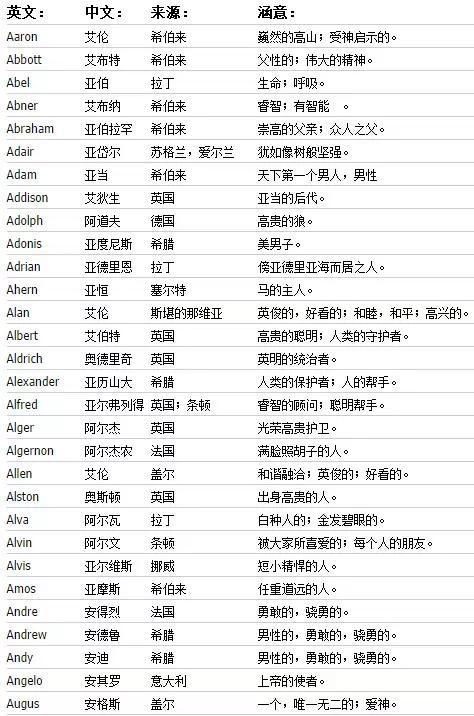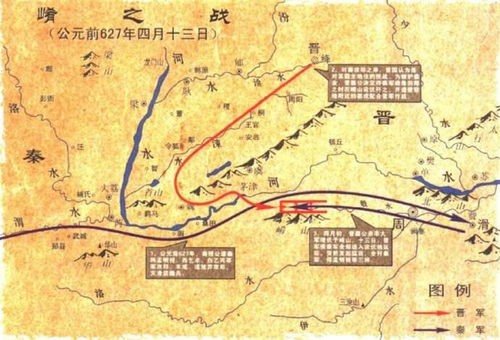初二英语教案全英文版。Unit 1 What’s the matter?

一、教学目标:
1. 语言知识目标:1) 能掌握以下单词:foot, knee, neck, stomach, throat...
2) 能掌握以下句型What’s the matter? I have a headache. You should drink some tea. That sounds a like a good idea. I have a sore back.
二、教学重难点:1) Talk about your health. 2) Make suggestions.
三、教学方法:Revision, Learning, Practice and Reading.
四、教学辅助:Tape-recorder and Lattern.
五、课时:Six periods
六、教学过程:
Period 1(Section A1a-2d)
I. Teaching Aims and Demands
1. Knowledge Objects. Body names. Illness.What’s the matter? I have a cold.
2. Ability Objects. Listening skill. Recognizing skill.
3. Moral Objects. Exercise every day and keep healthy and strong.
II. Teaching Importance and Difficulty
What’s the matter? I have a cold.
III. Teaching Methods
Recognizing method Listening method. Discover method. Pairwork.
IV. Teaching Aids
A tape recorder. A doll for teaching the names of the body. A Projector.
V. Teaching Procedures
Lead-in Name the parts of the body by pictures.
Step 1 Read a chant about the body.
Step 2 Enjoy a song.
Step 3 Play a game. Say and draw the part of body.
Step 4 Activity 1a.
Let Ss to look at the picture and write the correct letter [a-m] for each part of the body.
Step 5 Judge their problems based on every picture.
Step 6 Activity 1b.
Listen and look at the picture. Then number the names [1-5].
Step 7 Act it out with their partner.
Step 8 Listen again and complete the table.
Step 9 Activity 1c. Pair works.
Make conversations according to pictures.
Step 10 Think how to give advice if somebody is ill and give examples by using pictures.
Step 11 Activity 2a.
Let Ss to listen and number the pictures [1-5] in the order they hear them.
Step 12 Activity 2b.Listen again and match the problems with the advice.
Step 13 Activity 2c.Make conversations using the information in 2a and 2b.
Step 14 Activity 2d.
Role-play the conversation.
Step 15 Language points: explain the key words and phrases in section A-1.
Homework:
Teaching thought:
Period 2(Section A 3a-3c)
I. Teaching Aims and Demands
1. Knowledge Objects New words. Some advice. Grammar Focus.
2. Ability Objects
Listening skill. Reading skill.Writing skill.Communicative competence.
3. Moral Object To be a doctor and serve the people heart and soul.
II. Teaching Importance and Difficulty
What’s the matter? I have a toothache.
Maybe you should see a dentist. That’s a good idea.
III. Teaching Methods Listening method. Reading and writing methods. Pair-work.
IV. Teaching Aids A tape recorder A projector.
V. Teaching Procedures
Lead-in Review some usual disease by pictures.
Step 1 Talk about advice about health.
Step 2 Learn some new words.
Step 3 Discussion. Look at the title and the picture. Work in pairs and discuss some questions.
Step 4 Activity 3a. Read the passage. Discuss where it comes from.
Step 5 Give some reading strategies simply.
Step 6 Read the passage and do true or false.
Step 7 Activity 3b.
Ask Ss to read the passage again and check (√) the things that happened in the story.
Step 8 Free talk.
If you see someone lying on the street, what should you do?.
Step 9 Respect the aged and care for the young. It is a fine tradition of the Chinese nation. Teach the spirit to Ss.
Step 10 Activity 3c. Discuss the questions with a partner.
Step 11 Language points: explain the key words and phrases in section A-2.
Step 12 More exercises about the language points.
Homework:
Teaching thought:
Period 3(Grammar Focus-4c)
I. Teaching Aims and Demands
1. Knowledge Objects Reading and writing materials. Oral Practice.
2. Ability Objects Reading skill. Writhing skill. Communicative competence.
3. Moral Object Give good advice when someone needs your help.
II. Teaching Importance and Difficulty Reading practice. Oral practice.
III. Teaching Methods Reading and writing methods. Pair-work. Group-work.
IV. Teaching Aids Workbook exercises.
V. Teaching Procedure
Lead-in Role - play a conversation between a patient and a doctor.
Step 1 List some health problems and give some advice.
Step 2 Explanation about the use of modal verb should.
Step 3 Do some basic exercise.
Step 4 Compare some other modal verbs.
Step 5 Do more exercise.
Step 6 Complete activity 4a and 4b.
Step 7 Work in groups. Discuss how to keep ourselves healthy.
Step 8 Complete activity 4c.
Step 9 Do exercise to review the structures of this unit.
Homework Finish off the exercises of workbook.
Teaching thought:
Period 4(Section B 1a-1d)
I. Teaching Aims and Demands
1. Knowledge Objects Key vocabulary. Reading practice. Oral practice.
2. Ability Objects
Listening skill. Reading skill. Writhing skill.Practice skill.Communicative competence.
3. Moral Object Ask for help when you have problem.
II. Teaching Importance and Difficulty
Key vocabulary. Reading practice. Oral practice.
III. Teaching Methods
Reading and writing methods. Understanding method.Pair-work.Listening method.
IV. Teaching Aids A tape recorder.
V. Teaching Procedures
Lead-in Free talk: When these accidents happen, what should you do?
Step 1 Activity 1a. Put the actions in order.
Step 2 Activity 1b. Listen to the school nurse. Check (√) the problems you hear.
Step 3 Activity 1c. Listen again. Write the letter of each treatment next to the problems you checked in the chart above.
Step 4 Free talk:
1. What would you do in these situations?
2. What could we do to prevent these accidents?
Step 5 Give advice when accidents happen.
Step 6 Pair works. Let Ss make conversations.
E.g.:A: Who came to your office today?
B: First, a boy came in. He hurt himself in P.E. class.
A: What happened?
B: …
Homework After class you can talk to an expert about a particular problem.
For exaple, what should I do when I have problems with my little brother?
Teaching thought:
Period 5(Section B 2a-2e)
I. Teaching Aims and Demands
1. Knowledge Objects Key vocabulary.Reading material.Group work.
2. Ability Objects Reading skill.Writhing skill.Communicative competence.
3. Moral Object Great Chinese culture.
II. Teaching Importance and Difficulty
Key vocabulary.Reading practice.Writing exercise.Group-work.
III. Teaching Methods Reading and writing methods.Group-work.Communicative approach.
IV. Teaching Aids A projector.
V. Teaching Procedures
Lead-in Learn some new words.
Step 1 Free talk: What is the most important in our life?
Step 2 Think about the question by giving pictures:
What kind of accident or problem can happen when you …?
Step 3 Think about some accidents and talk about some advice to protect them.
Step 4 Activity 2a.Write the letter of each sport next to each accident or problem that can happen.
Step 5 Discuss these questions in groups.
Step 6 Activity 2b.Read the passage and underline the words you don’t know.
Step 7 Activity 2c.Read the statements and circle True, False or Don’t know.
Step 8 Activity 2d. Read the passage again and answer the questions.
Step 9 Activity 2e.Put the sentences in the correct order.
Step 10 Introduce the story of 127 Hours.
Homework Write down the sentences about when you’re tired in your exercise book.
Teaching thought:
Period 6(Section B 3a-Self Check)
I. Teaching Aims and Demands
1. Knowledge Objects Vocabulary in this unit.Writing practice.Just for Fun.
2. Ability Objects Reading skill.Writhing skill.Communicative competence.
3. Moral Object Give your help to who needs one.
II. Teaching Importance and Difficulty Vocabulary in this unit.Writing practice.
III. Teaching Methods Reading and writing methods.Self check method.
IV. Teaching Aids A projector.
V. Teaching Procedures
Step 1 Enjoy a video: Between a Rock and a Hard Place.
Step 2 Talk about a story about a person who once were “between a rock and a hard place”.
Step 3 Activity 3a:
Imagine you are the school nurse and a student just had an accident or a health problem. Make notes about what he/she should and shouldn’t do.
Step 4 Activity 3b:
Write a conversation between the nurse and the student using the notes in 3a.
Step 5 Do self – check.
Step 6 Language points: explain the key words and phrases in section B-2.
Step 7 More exercisers about the language points.
Homework Finish off the workbook exercises.
Teaching thought:
Unit 2 I’ll help to clean up the city park.
一、教学目标:
1. 语言知识目标:
1) 能掌握以下单词: clean up, city, cheer, cheer up, give out, volunteer, notice,...
2) 能掌握以下句型:① You could help to clean up the city parks. ....
3) 能了解以下语法: 情态动词could, should的用法;用should或could提出建议并对别人的建议作出评价。如何表达主动提供帮助。X K b1.C om
2. 情感态度价值观目标:
在授课过程中渗透助人就是助己,助人收获快乐的情感目标,使学生在谈论如何为别人提供帮助的对话中能意识到尽己所能,帮助他人,乐于奉献是一种良好的品德,培养学生为他人着想,热爱公益事业,乐于助人的优良品质。
二、教学重难点
1. 教学重点:
1) 掌握这些短语动词的构成和用法:clean up, city, cheer, cheer up, give out, ....
2) 学会提供帮助的基本句型:I’d like to work outside.I’ll help clean the city park.
2. 教学难点:学会提供帮助的基本句型
三、教学过程
Period 1(Section A 1a-2d)
Step 1 Warming up
1. 播放学生志愿者进行义务帮助别人的活动视频,通过询问他们以下问题来引导学生们了解社会上一些的志愿们进行的活动。
Step 2 New words Read new words on p9-10.
Step 3 Discussion
1. 1a. Look at the ways you could help others. Then list other ways.
2. Ss discuss with their partners and write the ways one could help others:
① Help plant trees by the river. ② Help clean up the city park.
③ Visit the old people in the old people’s home. ④ Help young kids to learn English.
Step 4 Listening
1. T: Tell Ss to read the sentences in the chart. Make sure they know the meaning of the sentences.
2. 1b. Play the recording for the Ss to listen and number the ways the boy and girl could help others.
Step 5 Pair work
1. Let Ss read the conversation in the picture.
2. 1c. Use the information in the chart of 1b to make other conversations.
A: I hope to work outside.
B: You could help to clean up the city parks. ........
3. Let some pairs act out their conversations.
Step 6 Listening
1. 2a:
T: A group of students are planning a City Park Clean-up Day. Listen and check (√) the things they are going to do to tell people about it.
1. Look at the pictures in 2a. Discuss the things they are going to do.
2. Play the recording for the Ss to listen and check the pictures.
3. Play the recording again to check the answers.
2. 2b:
1. Let Ss read the sentences below. Explain some main sentences for the Ss. Make sure they know what to do.
2. Play the recording for the Ss to write the correct words in the blanks.
3. Play the recording again to check the answers.
Step 7 Pair work
1. 2c. Tell Ss to make a conversation using the information in 2a and 2b.
2. Let one pair to read out thei r conversation first.
e.g. A: We need to come up with a plan for the City Park Clean-Up Day.
B: Let’s have lunch first.
A: No, we need to start now. Clean-Up Day is only two weeks from now.
B: You’re right. We can’t put off making a plan. As we talk, I’ll write down all our ideas. Then we can decide which ideas are best.
A: Let’s make some notices, too. Then I’ll hand them out after school.
B: And we could each call up ten students and ask them to come.
3. Ss act the conversation in pairs. Ask some pairs to act out their con versations.
Step 8 Reading and Role-play 新 课 标 第 一 网
1. Read the conversations and answer the two questions:
① Where’s Helen going to work this summer?
__________________________________
② What did Tom do to help the old people?
____________________________________
Answers: She’s going to work in an old people’s home.
Reading the newspaper or just talking to the old people.
2. Read the conversation after the teacher.
3. Practice the conversation with their partner. Then let some pairs to act out the conversation.
Homework:
Teaching thought:
Period 2(Section A 3a-3c)
Step 1 Revision
1. Write down the phrases.
1. 打扫 ________ 2. 分发 ________ 3. 曾经 _______
4. (使)变得高兴 ________ 5. 义务做某事 _________________
6. 大打扫日 ______________ 7. 想出主意(办法)____________
2. Role-play
A: Hi, Tom. I’m making some plans to work in an old people’s home this summer.
B: Really? I did that last summer!
Step 2 New words Read new words on p11.
Step 3 Reading
1.Tell Ss to read the article in 3a quickly and try to find the answers to these questions:
1. What does Mario love?
2. What does Mary love? 新- 课-标 -第 -一 - 网
3. What do Mario and Mary volunteer to do?
Ss read the article quickly and try to answer the questions:
Answers: 1. He loves animals.
2. She loves reading books.
3. Mario volunteers at animal hospital and Mary helps kids learn to read.
2.3b: Read the article again and answer the questions.
1. Why does Mario volunteer to help others?
2. Why does Mary volunteer to help others?
3. What does Mario say about volunteering?
4. What does Mary say about volunteering?
Answers: 1. Because he believes it can help him to get his future dream job.
2. Because she can do what she loves to do and help others.
3. He gets such a strong feeling of satisfaction when he sees the animals get better and the look of joy on their owners’ face.
4. Volunteering is a dream come true for her.
Homework Make sentences with these words.
help (to) do; want to do; learn to do; decide to do; how to do; volunteer to do
Teaching thought:
Period 3(Grammar Focus-4c)
Step 1 Revision
Complete the sentences.
Mario and Mary ____ ___ several hours each week __ ____ others. Mario wants __ ___ an animal doctor. He _________ at an animal hospital. He wants __ _____ more about ____ __ care for animals.
Mary is a book lover. She could read by herself __ ___ ____ of four. Last year, she decided __ ___ ___ for a volunteer after-school _______ program. Mary still works there once a week __ ____ kids _____ __ read. Volunteering here is a dream come true for her. She can what she _____ ___ ___and helps others at the same time.
Can you tell something about Mary to us?
Answers: give up, to help, to be, volunteers, to learn, how to, at the age, to try out, reading, to help, learn to, loves to do
Step 2 Grammar focus
1. 阅读Grammar Focus中的句子,然后做填空练习。
Step 3 New words Look at the big screen and learn the new words and expressions:
Step 4 Practice
1. 4a: Fill in the blanks with the phrasal verbs in the box.
Tell Ss to read the sentences in 4a and try to fill in the blanks with the phrasal verbs in the box.
Answers: put off; call up; come up with; cheer up; put up; hand out; give out
2. 4b: Fill in the blanks with the correct forms of the verbs in the box.
Check the answers with the Ss.
3. 4c: Complete the sentences with your own ideas. Use infinitives.
Homework Make sentences with the phrases below.
put up, hand out, call up, cheer up, come up with, give out, put off
Teaching thought:
Period 4(Section B 1a-2e)
Step 1 Warming up and revision
1. Daily greeting. 2. 复习动词不定式的用法,并完成相关任务。
3. Check the homework. Let some Ss report “Who’s the … in class?”
Step 2 Presentation
1. Present the new words on the big screen and learn the new words together.
1) repair v. 修理;修补 2) fix v. 安装;使固定http ://w ww .xkb1. com
3) give away 赠送;捐赠 4) wheel n. 车轮;轮子
2. Ss read and try to remember the new words.
3. Work on 1a and match the sentences with the similar meaning.
4. Check the answers with the Ss.
Step 3 Writing . Work on 1b
1. Ask one student read the phrases and the nouns. Tell Ss to match the phrasal verbs with the nouns. Then make sentences with the phrases.
2. Let some Ss come to the blackboard and write down their sentences. Then check together.
Step 4 Listening . Work on 1c:
1. Tell Ss to look at the pictures in 1c. Tell them the boy in the pictures is Jimmy. He’s a good boy. He likes to help others. What is he doing now? Listen to the tapes and number the pictures.
2. Play the recording for the Ss. Ss just listen for the first time. Play the recording again and number the pictures.
3. Check the answers:
Step 5 Role-play
1. Work in pairs. Role-play a conversation between Jimmy and the reporter. Use the information in 1c and 1d.
2. Let two students make a model for the Ss.
3. Ss practice their conversations
4. Teacher can walk around the classroom, and give some help to the Ss.
Step 6 Reading
Fast Reading
1. T: Now let’s work on 2b. First, let’s read the questions and make sure we know the meanings of all the questions. Then read the passage quickly and find the answers to the questions.
1) What kind of letter is it? 2) Who wrote the letter to Miss Li? Why?
2. Ss read the letter quickly and try to find the answers to the two questions.





















